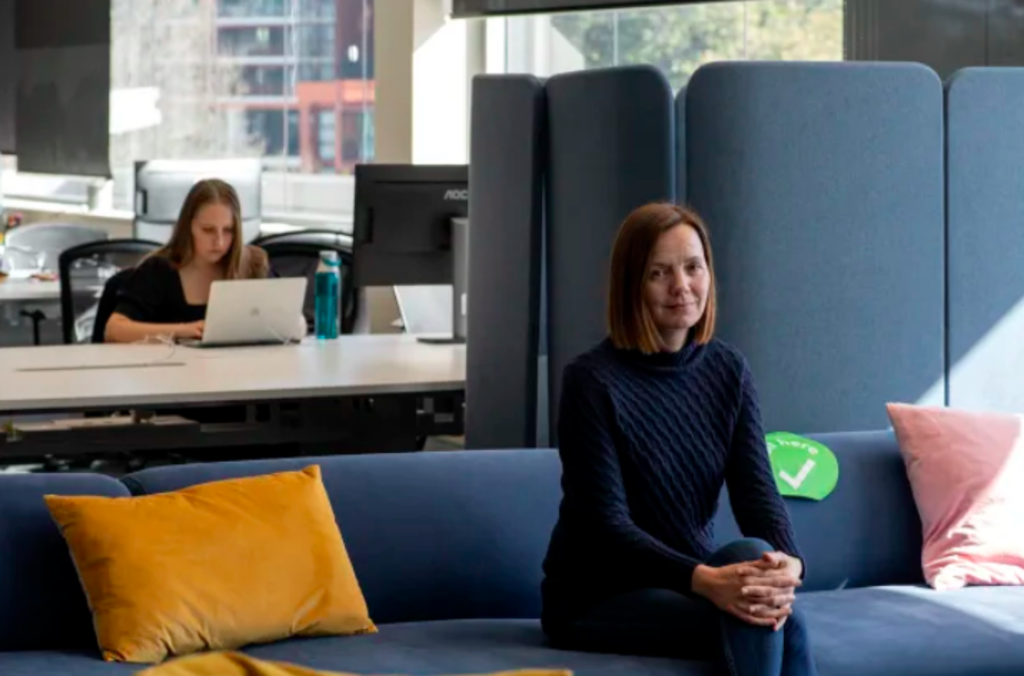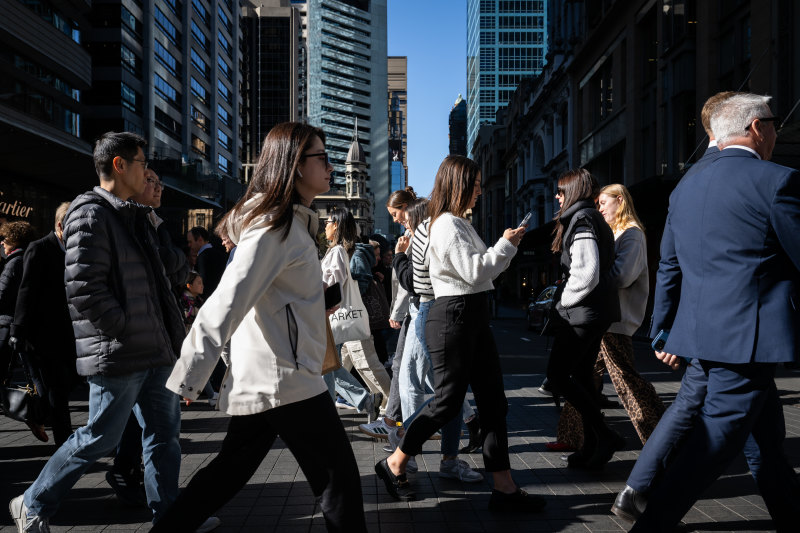
Why Aussies are keener to return to the office than Brits or US
Australians worked less from home before COVID-19 than people in Britain and the US, have worked more in the office during the pandemic and are keener to return to the office when lockdown restrictions end.
But despite their apparent love of the office, Australian white-collar workers say they are more productive at home than counterparts in Britain and the US.
“That’s the irony,” says Gabrielle McMillan, the chief executive of office portal company Equiem, which collated the survey results of 4500 office users across the three global markets.
“Australians are wanting to get back to the office, but it’s not about productivity. It’s about something else.”
That “something else” is a question that will force employers and landlords to focus on the role of the corporate office as they make decisions about longer-term workplace environments that balance the need for staff to collaborate with staying safe from a highly contagious and deadly disease.
Recruiter Jen Davis, the mother of two primary-school-aged children, works from home three days a week and in her Sydney office two days. The expatriate Brit – whose husband is also from Britain – says managing work and home life is harder without family support in Australia.
“Being home is great for being able to get through the workload, but I find the being in the office great for connecting and engaging with people who do come in at the same time as me,” Ms Davis says.
She drives into her Waterloo office from her home in eastern suburbs Waverley and says the commute gives her a crucial chance to switch from work mode to wife-and-mother mode – and she thinks that is one reason people like coming into the office.
“I tend to think that’s a big deal,” she says. “[People] do like to have that separation.”
There is also the issue of presenteeism that makes some feel they have to be there.
“Some people still do believe that unless you’re in the office you’re not technically working or there are questions over where you are and what you’re doing,” Ms Davis says. “It should be measured on output as opposed to location.”
A sense of community
Equiem’s survey over April and May, which drew one-quarter of its responses from Australia, showed the top reasons people wanted to return to the office were to see colleagues and for their building community.
“Landlords that have managed to create a sense of community – which definitely is more evident in some of our buildings than others – this is emerging as a factor in terms of people returning to their office buildings sooner,” Ms McMillan says.
The findings from a company that makes money selling tenant engagement software to landlords may not surprise, but Equiem is not alone in this view.
Rob Aird, the managing director of workplace design firm Unispace, says Australian workers’ greater enthusiasm for the office likely reflects the fact that this country has been less hit by the pandemic than Britain and the US. He agrees that people want to return, however.
“What’s an open-plan office about? It’s about eavesdropping, learning by osmosis,” he says.
“It’s a reflection of the realities of management. Their single biggest tool to drive culture, problem-solving, innovation, brand is actually the office. That’s the biggest tool they’ve got – sticking people next to each other.”
It is less about presenteeism – that is more likely in a more conservative office culture in a country such as the US – but a reflection of the fact that there are things workers cannot achieve at home, Mr Aird says.
An evolution of working habits – accelerated by the pandemic – will mean some tasks are done at home or at remote hubs and people will increasingly come into the office only for a particular type of experience or task, he says.
Employers will cut their fixed space needs by 25 per cent over the long term as they reduce desk numbers and use that space increasingly for tasks that cannot be achieved at home or among a dispersed workforce.
“You’ll probably see increase in space dedicated to collaboration, problem solving, innovation and socialising,” Mr Aird says.
The survey of Equiem’s clients over April and May showed 59 per cent of Australian respondents expected to work remotely at least once a week after lockdown, below the 63.5 per cent average, and less than Britain’s 69 per cent and US’ 62 per cent.
Australians were also more reluctant to give up the office, with 53 per cent saying their whole office was working from home during the time of COVID-19 restrictions compared with 79 per cent in Britain and 70 per cent in the US.











